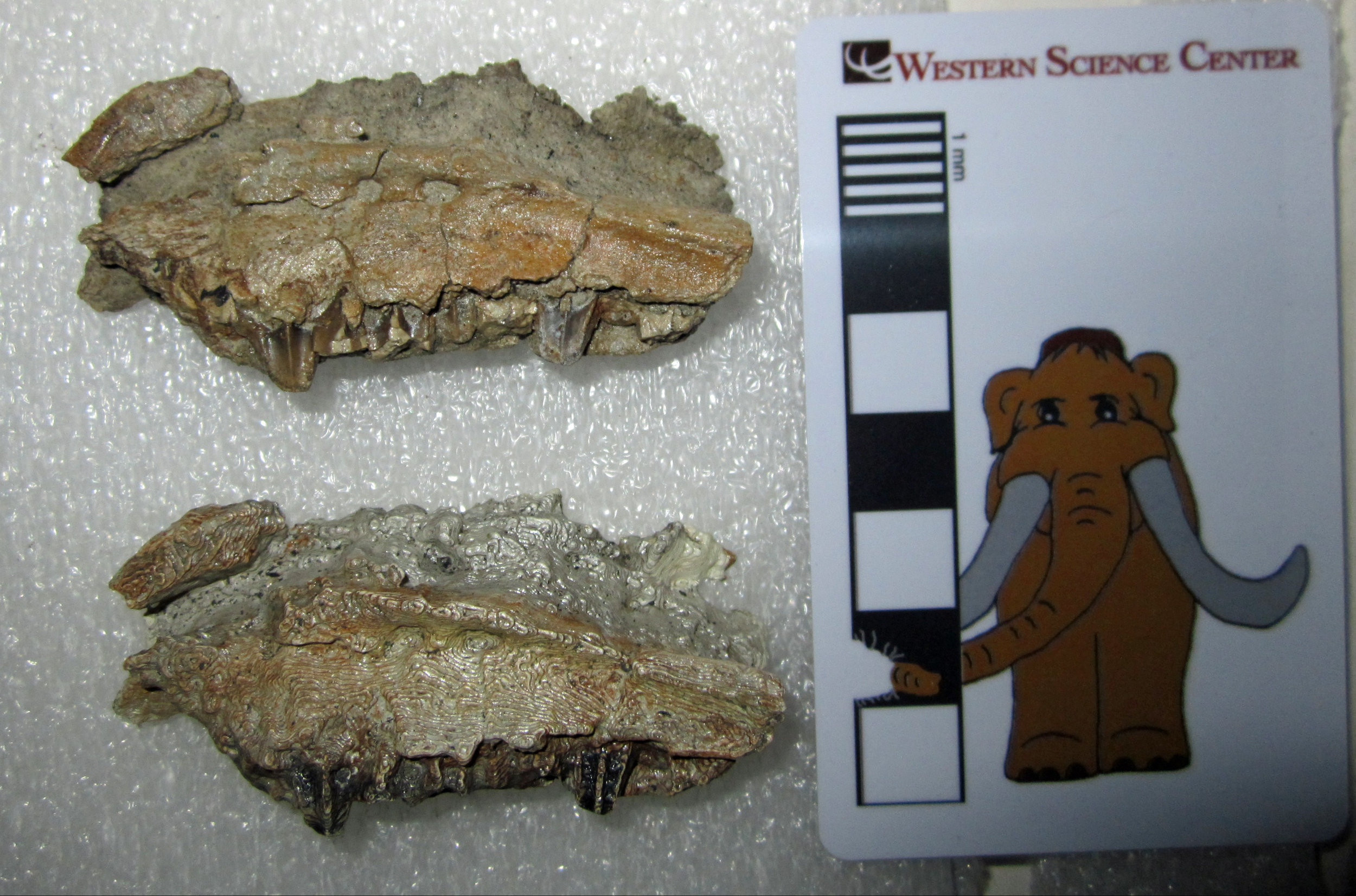 Last week, five staff members from the Western Science Center, including yours truly, traveled to Albuquerque to attend the 2018 Society of Vertebrate Paleontology conference. We presented six posters on the research, outreach, and educational activities taking place at the museum. Three of the posters dealt with fossils discovered in the Menefee Formation of New Mexico, including the new dinosaurs Invictarx (https://valleyofthemastodon.wordpress.com/2018/08/24/fossil-friday-invictarx-zephyri/) and Dynamoterror (https://valleyofthemastodon.wordpress.com/2018/10/12/fossil-friday-dynamoterror-dynastes/). We presented this research with our colleagues from Zuni Dinosaur Institute for Geosciences and Southwest Paleontological Society.This beautiful little bone was the subject of a poster led by Kara Kelley, who has been participating in Menefee expeditions since 2012 and is now an undergraduate at the University of Arizona - Tucson. It's the left maxilla (upper jaw bone) from a very young, very small hadrosaur, which Kara discovered in 2016. Bones of baby dinosaurs are often rare, and this remains the only such bone we have collected in the Menefee Formation so far. In the image, the outer surface of the bone is shown, with a row of tiny teeth along the bottom. The animal's snout would be towards the left of the image, and the back of the skull towards the right. We can't yet tell exactly what kind of hadrosaur this little maxilla belongs to, but it does provide information on the anatomy of a young hadrosaur that lived 80 million years ago.And lest you think that we have two tiny hadrosaur maxillae, the bottom one is actually a painted 3D-print that we created here at Western Science Center through photogrammetry. Now we have a replica of the maxilla that we can take to events and conferences to show people and highlight just one of the many research projects unfolding here at the museum.Andrew McDonald
Last week, five staff members from the Western Science Center, including yours truly, traveled to Albuquerque to attend the 2018 Society of Vertebrate Paleontology conference. We presented six posters on the research, outreach, and educational activities taking place at the museum. Three of the posters dealt with fossils discovered in the Menefee Formation of New Mexico, including the new dinosaurs Invictarx (https://valleyofthemastodon.wordpress.com/2018/08/24/fossil-friday-invictarx-zephyri/) and Dynamoterror (https://valleyofthemastodon.wordpress.com/2018/10/12/fossil-friday-dynamoterror-dynastes/). We presented this research with our colleagues from Zuni Dinosaur Institute for Geosciences and Southwest Paleontological Society.This beautiful little bone was the subject of a poster led by Kara Kelley, who has been participating in Menefee expeditions since 2012 and is now an undergraduate at the University of Arizona - Tucson. It's the left maxilla (upper jaw bone) from a very young, very small hadrosaur, which Kara discovered in 2016. Bones of baby dinosaurs are often rare, and this remains the only such bone we have collected in the Menefee Formation so far. In the image, the outer surface of the bone is shown, with a row of tiny teeth along the bottom. The animal's snout would be towards the left of the image, and the back of the skull towards the right. We can't yet tell exactly what kind of hadrosaur this little maxilla belongs to, but it does provide information on the anatomy of a young hadrosaur that lived 80 million years ago.And lest you think that we have two tiny hadrosaur maxillae, the bottom one is actually a painted 3D-print that we created here at Western Science Center through photogrammetry. Now we have a replica of the maxilla that we can take to events and conferences to show people and highlight just one of the many research projects unfolding here at the museum.Andrew McDonald
